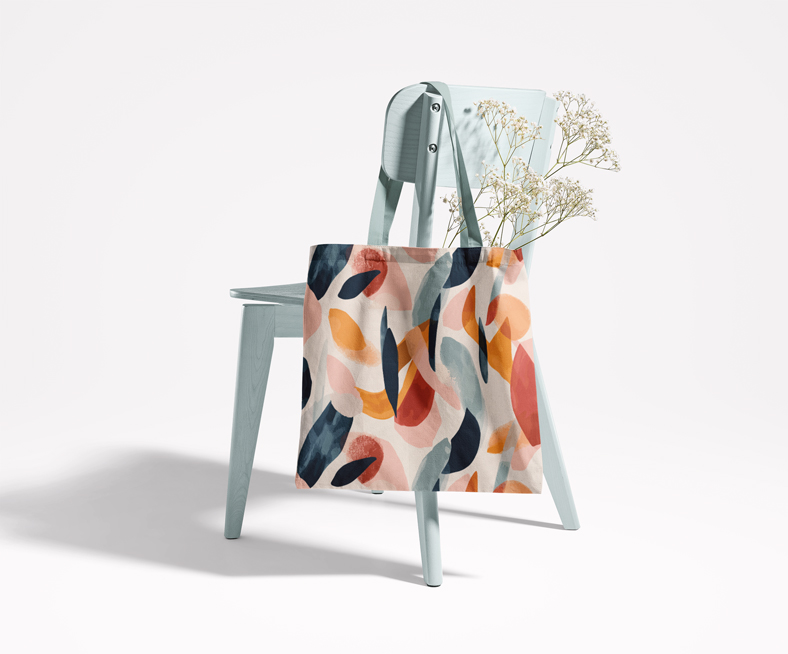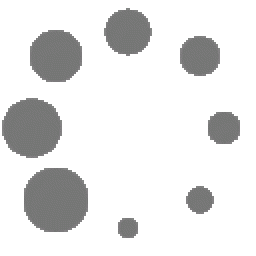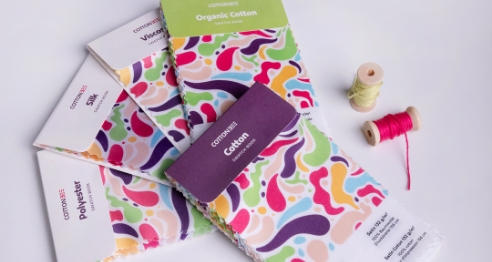Reactive printing
Reactive printing with a wide range of applications, ensuring the durability and resilience of printed fabrics. No minimum order size, with free delivery from €100 and bulk discounts.
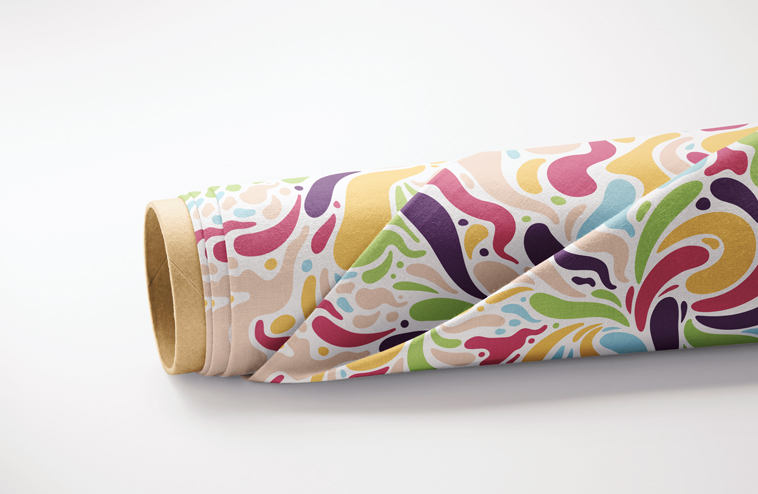
Reactive printing
Reactive printed fabrics

Reactive printing
Vivid, long-lasting colours This printing technology allows for precise, vivid and saturated colours.
Excellent resistance to washing Reactive dyes are highly durable and resistant to washing and fading, making the print resistant to rubbing, weathering and UV radiation.
Borderless printing We print designs right up to the edge of the material, without leaving white margins.
Order a Swatch Book. Free delivery!
Check which fabrics we print on. The base version of the Swatch Book contains samples of cotton fabrics, but you can also add samples in organic cotton, viscose, polyester and silk. Sample size is 9 x 16.5 cm. The Swatch Book is ready to be sent out the same day!
ORDER A SWATCH BOOK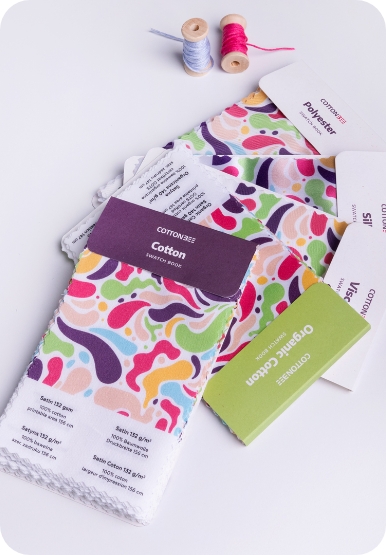


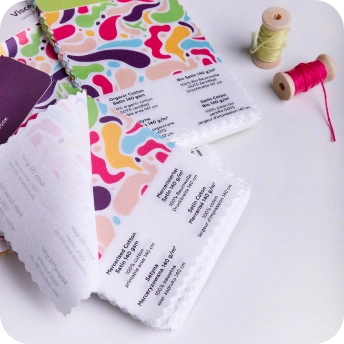

What is reactive printing?
Reactive printing on fabrics is a printing technique that uses chemical reactions between the dye and the fibres of the material. The dye contains chemicals that react with the fibres, penetrating deep into the structure. This results in long-lasting and intense colours that are resistant to washing and fading even after repeated washing. Once the dye is applied, the fabric goes through a fixation process, which involves heating it to allow a chemical reaction between the dye and the fibres. This step ensures durability and resistance to colour fading. Reactive printing on fabrics is commonly used in the production of clothes, home textiles such as bedding, curtains or drapes, and other products that require durable and intense colour. The technique is popular in the textile industry due to its durability and high print quality.
What are the advantages and disadvantages of reactive printing?
Reactive printing on fabrics is an effective printing technique that provides durable and intense colours. It also allows complex and multi-dimensional patterns to be created, giving designers a wide range of creative possibilities. Reactive printing is resistant to washing, even after repeated washing. In addition, it is UV-resistant, making it suitable for outdoor applications or areas exposed to intense sunlight. However, it is a more environmentally invasive technology. Furthermore, the production process itself can be time-consuming, especially due to the need for dye fixation. Additionally, reactive printing requires specialised materials and dyes, which can increase production costs. Despite these challenges, reactive printing remains a popular and valued technique in the textile industry due to its durability and high-quality prints.
